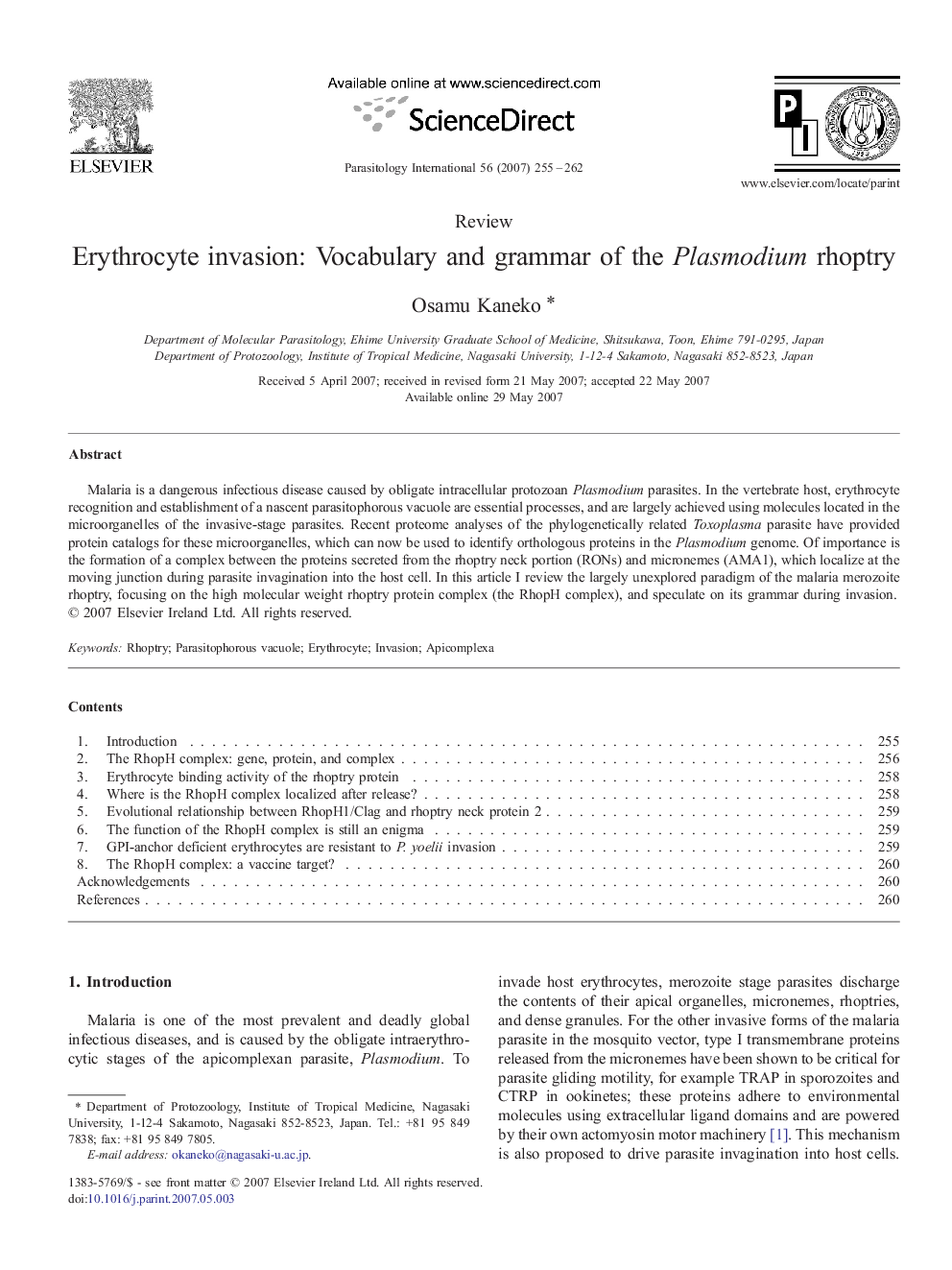| Article ID | Journal | Published Year | Pages | File Type |
|---|---|---|---|---|
| 3418300 | Parasitology International | 2007 | 8 Pages |
Malaria is a dangerous infectious disease caused by obligate intracellular protozoan Plasmodium parasites. In the vertebrate host, erythrocyte recognition and establishment of a nascent parasitophorous vacuole are essential processes, and are largely achieved using molecules located in the microorganelles of the invasive-stage parasites. Recent proteome analyses of the phylogenetically related Toxoplasma parasite have provided protein catalogs for these microorganelles, which can now be used to identify orthologous proteins in the Plasmodium genome. Of importance is the formation of a complex between the proteins secreted from the rhoptry neck portion (RONs) and micronemes (AMA1), which localize at the moving junction during parasite invagination into the host cell. In this article I review the largely unexplored paradigm of the malaria merozoite rhoptry, focusing on the high molecular weight rhoptry protein complex (the RhopH complex), and speculate on its grammar during invasion.
